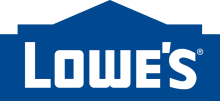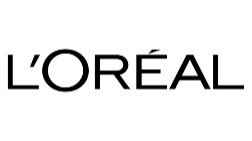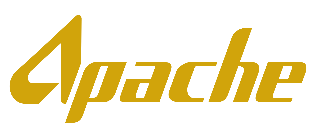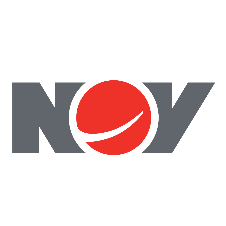Investing for the Long Term
In a recent Wall Street Journal joint commentary, the CEO of JP Morgan Chase, Jamie Dimon, and legendary value investor, Warren Buffet, declared that quarterly earnings guidance “often leads to an unhealthy focus on short-term profits at the expense of long-term strategy, growth and sustainability.” They argue that companies frequently cut back investment in hiring, technology upgrades, and research and development to meet quarterly earnings guidance.
The challenge and stress of meeting short-term earnings guidance has likely contributed to the decline in the number of public companies over the past two decades. The universe of publicly traded companies has been steadily shrinking in the U.S. New businesses have been going public at less than half the rate of the 1980's and 1990's. About 3,600 firms were listed on U.S. stock exchanges at the end of last year, down more than half from 1997.
Good returns come from the decisions that sometime run counter to market sentiment and depend on whether the investor has the fortitude to maintain the necessary discipline.
Another marker for a short-term emphasis by management is the increasing use of pro-forma reporting and earnings. Some critics argue that pro-forma earnings are simply an effort by management to cast a company’s earnings in a more positive light or to gloss over poor financial results in an effort to improve stock performance. “Pro-forma earnings in current usage” means that many items are excluded from the calculation of net income at the discretion of management. Expense categories often excluded from pro-forma earnings include restructuring charges, one-time charges, non-cash charges and gains / losses from one-time sale of assets. There is no regulatory guidance or consistency in the reporting or calculation of pro-forma earnings, making comparisons difficult.
As a corollary to some companies’ short-term focus, individual and institutional investors can likewise be fixated on short-term results. Missing or beating quarterly earnings guidance can lead to an overreaction, both on the upside and the downside. How much emphasis should one actually place on a company beating a number that its management sets? Investors who react to one quarter’s results may buy or sell just when the reverse action is needed, based on the long-term intrinsic value of the company. Ironically, it is these overreactions on the downside that create new investment opportunities.
Our approach is to identify companies that invest to sustain and improve their competitive position and shareholder value over time. We seek investment candidates from companies
that reinvest their surplus capital in ways to strengthen their advantages and that are temporarily selling at a discount to their fair value, due to issues unrelated to their long-term value. We focus on cash flow trends and management’s stewardship of capital, not quarterly
or pro-forma earnings.
Delta follows a value discipline and, as such, we expect our portfolio will experience low turnover as our holding period is typically long-term. As value investors, we believe there are inefficiencies in the market. These inefficiencies -- whether due to technical, fundamental (such as an earnings miss) or behavioral – can cause stock prices to deviate from their economic value. It may take time for these inefficiencies to resolve and for the economic value to be recognized in the stock price; as a result, it requires discipline and patience. Value investing represents a commitment to a long-term outlook regardless of short-term price movements. Good returns come from the decisions that sometime run counter to market sentiment and depend on whether the investor has the fortitude to maintain the necessary discipline.
June 28, 2018
Company Comments
Comments follow regarding common stocks of interest to clients with stock portfolios managed by Delta Asset Management. This commentary is not a recommendation to purchase or sell but a summary of Delta’s review during the quarter.
Lowe’s Companies, Inc. { LOW }
Lowe’s is a leading home improvement retailer in North America with over 2,152 stores (which equates to 215 million square feet), including 303 stores in Canada and 10 in Mexico. The company’s stores offer a wide selection of home improvement products and services aimed at do-it-yourself and professional customers, as well as commercial business clients.
Lowe’s has proven to be a very effective retail operator with a culture built on exceptional customer service. Over many years, the company has developed a highly automated distribution system that links its suppliers, distribution centers and company stores on a single network, driving operating efficiency. Lowe’s significant scale combined with its efficient distribution system creates a cost advantage. The company has been exceptionally proficient at using this cost advantage for maintaining low prices to generate higher sales volumes while producing solid free cash flow.
The U.S. home improvement retail market is mature and has become fully saturated with stores. After years of rapid expansion, Lowe’s new store growth will slow as quality locations become increasingly limited. To help drive incremental growth and improve profit margins, the company is redoubling efforts to improve in-store execution and operating efficiency. Lowe’s is adding customer-facing employees, improving inventory management and significantly shrinking its operating cost structure. The company also plans to increase its proprietary products and further penetrate the professional market. With Lowe’s and Home Depot together controlling approximately 40% of industry market share, the retail home-improvement industry remains fairly fragmented. Lowe’s competitive strengths with new products and services should drive further market share gains from smaller competitors.
Over many years, Lowe’s has developed a highly automated distribution system that links its suppliers, distribution centers and company stores on a single network, driving operating efficiency.
While there are some signs of competitive pricing between Home Depot and Lowe’s, it is one of the more rational areas of retailing, due in part to less pressure from online web retailers like Amazon. The project nature of the purchases at the home centers have enabled them to endure better than other areas of retailing. Lowe’s has a new online fulfillment center opening in the third quarter of 2018, which will allow for expansion of its online product offerings and faster parcel shipping. Online sales finished 2017 at 4.4% of total sales or about $3 billion.
Another area of growth for Lowe’s is the professional customer, which makes up about 30% of Lowe’s revenues. The company’s professional customer business has grown faster than the “Do It Yourself” business for the past two years. Lowe’s is ramping up its inventory to be more suited for professionals and is providing more tailored services. “Lowe’s For Pros” was launched in 2015, to make it easier for professionals to manage products at multiple jobs as well as purchase and pick up items nationwide. Lowe’s has a compelling 5% back credit program for professionals.
Lowe’s named Marvin Ellison as President and CEO effective July 2018. He was the Chairman and CEO of J.C. Penny and has previous experience as an executive with Home Depot. His goal is to reduce the performance gap with Home Depot and enhance Lowe’s supply chain and product offering.
Given minimal expected store expansion, we have assumed Lowe’s can grow revenues approximately 2% over the next decade. At this pace of growth and given improving in-store execution, we believe average cash flow margins will gradually improve to just over 10% over this period. Based on these assumptions, our stock valuation model indicates Lowe’s current stock price offers a long-term average annual rate of return over 7.5%.
L’Oréal is a leading manufacturer in the global cosmetics market with a presence in 150 countries on five continents. The company has excellent market share positions in most regions of the globe. The scale and breadth of L’Oréal’s brand portfolio and geographic reach gives it sustainable competitive advantages. The company’s success over many years is attributable to the development of premium products, global branding and a number of product innovations geared to targeted regions.
Much of L’Oréal’s recent growth has been organic. A key driver of growth has been the impressive amount spent on advertising and promotion at 30% of sales versus 25% on average for the sector. By marshalling its resources on a limited number of brands, the company can launch new products using the identity of an established brand. A healthy investment in research and development has also contributed to growth. The company invests over 3% of sales on R&D. With 20 research centers around the world and more than 4,000 employees dedicated to research, the company’s research is focused on “universalizing” beauty. Universalizing beauty means adapting it to local tastes and culture and making it accessible to all. As a result of its robust R&D budget, L’Oréal launches an average of 200 to 300 new products a year, representing 15% of sales.
L’Oréal’s success over many years is attributable to the development of premium products, global branding and a number of product innovations geared to targeted regions.
L’Oréal’s new market regions will remain a key growth driver going forward, and beauty as a category is well positioned to benefit from growing consumer spending in many of these regions. European and North American markets are mature with high penetration and well established competitors. In contrast, the company is seeing growth in newer markets where the middle class is growing and eager for high quality cosmetic products. L’Oréal is targeting to more than double its customer base from 1.2 billion to 2.5 billion over the next 10 to 15 years by focusing on product categories that are popular in emerging markets.
Asia remains a major area of growth and now represents over 23% of sales, making it L’Oréal’s third largest market globally. L’Oréal is the No. 2 cosmetics player in China, with leading positions in skin care, make-up and colorings. It only recently launched its hair care products there, which now comprise 25% of the Chinese market. With these new category introductions, L’Oréal may become China’s leading cosmetics player over the next few years.
The company maintains worldwide pricing for its products; as a result, profit margins in emerging economies are comparable to those produced in developed ones. A sustainable competitive advantage is the company’s ability to cover all price points with a range of brands. L’Oréal can establish a presence in an emerging economy by introducing lower price point brands without damaging the later introduction of its higher priced premium brands.
The death of L’Oréal’s largest shareholder, Liliane Bettencourt, in September 2017 may provide some strategic options for the company down the road. Nestle owns a 23.3% stake in L’Oréal and could monetize its investment or conversely purchase the remainder of L’Oréal. The L’Oréal family is also free to sell shares but, for the present, both sides have indicated they are following the status quo.
Due to growth potential in emerging markets, we believe L’Oréal can continue to grow its revenues despite its exposure to mature North American and European markets. Profit margins are likely to be constrained by competitive pressures as well as possible inflationary cost increases in the developed economies. However, both should be offset by cost efficiency measures in marketing and supply sourcing as L’Oréal consolidates the operational aspects of its disparate businesses. We believe L’Oréal will be able to maintain long-term operating profit margins in the middle teens and earn a long-term rate of return of over 4%.
SGS is the world’s leading testing, inspection and certification company. The company creates value for a wide range of entities by monitoring and improving its productivity, quality, safety, efficiency and risk management. The Swiss-based company has more than 95,000 employees and operates a network of over 2,400 offices and laboratories around the world.
Increasing concerns around the environment, safety, quality and performance in all consumer products and foods should continue to drive increased product testing.
SGS has a very diverse portfolio of businesses, both in terms of end-markets and geographies. The three main lines of business comprise testing, inspection and certification (TIC) services. These services are applied across a number of industry sectors, including agriculture, minerals, construction, oil/gas/chemicals, automotive and food, to name a few. The TIC industry is diverse, encompassing activities as disparate as certifying adherence to government standards, operating testing or inspection systems for corporations, testing products for safety and reliability and inspecting products to make sure they meet performance standards. The overall unifying concept of this business is that there is the need for testing, inspection and certification of products, services and systems by engineering experts that have a reputation of reliability and trustworthiness.
SGS’ revenue patterns tend to be relatively stable since a big portion is generated from recurring contracts. Customer retention is high as it can be expensive and time consuming to switch from one TIC company to another. Furthermore, many TIC services are highly specialized and can only be delivered by a limited number of certification companies. Another competitive barrier to entry is global scale. Size is a key advantage to capturing the largest and most complex contracts. Clients often seek TIC providers with appropriate financial strength together with the ability to mobilize large teams to perform short duration projects.
The company’s global competition is limited primarily to two companies, Bureau Veritas and Intertek. The testing market is fragmented with the top ten companies accounting for about half the outsourced TIC functions, with the remainder being a very long tail of small companies. In many cases, companies and governments continue to perform TIC functions in-house, even though their costs are higher than outsourcing the activity. This industry structure provides SGS with the opportunity for sales growth through increased market share and bolt-on acquisitions.
SGS, with its approximate 15% global market share, is the leading company in an attractive industry. The TIC industry is a beneficiary of a number of global trends, including increasing government regulations, environmental and safety concerns and outsourcing. Standards have been applied with growing intensity as more products are being manufactured overseas, which creates a need to trace product origin and maintain quality. Increasing concerns around the environment, safety, quality and performance in all consumer products and foods should continue to drive increased product testing.
We believe organic growth and market share gains should allow SGS to grow its revenues at approximately 5% annually over the next decade. In addition, through cost efficiencies and adequate pricing, operating margins should average 16.5%. Further, taking into account SGS’ strong balance sheet, our model indicates the company’s stock offers an average long-term annualized rate of return of 6%.

Apache has grown to become one of the largest independent oil and gas exploration companies in the world. Apache’s asset portfolio encompasses the United States, United Kingdom and Egypt. Approximately 52% of the company’s production and 70% of proved reserves is from North America. Apache has 7 million gross acres across the U.S., 70% of which is undeveloped. The company’s North American assets provide a good balance of hydrocarbon mix and reserve life, with opportunity for continued exploration and production growth.
Apache disclosed that it has discovered the equivalent of at least two billion barrels of oil in the Permian basin in a new West Texas field that has the potential to become one of the largest energy finds of the past decade.
Historically, Apache has strived for a diverse portfolio of assets that balances oil and gas production, North American and international exposure, and a short-term and long-term risk and reward profile. This strategy has given Apache the ability to deliver long-term production and reserve growth while achieving competitive returns on invested capital. Apache’s management team maintains a long-term focus and believes the oil and gas industry remains cyclical. The company will not chase production growth at the expense of profitability and return on capital.
Apache has experienced a difficult operating environment, much of which we believe to be cyclical.
As the company grew in size and it became more difficult to drive production growth, Apache made larger acquisitions with lower near-term returns and entered risky geopolitical regions internationally. Meanwhile, Apache’s North American peers were early movers in the U.S. shale boom. In addition, oil prices remain well below peak prices from a few years ago, which has weighed heavily on production revenues. As a result, Apache replaced its former CEO with John Christmann, a U.S. oil production veteran. The company has pared back its portfolio to induce more certainty to its production profile; and it has reduced capital intensive long-term projects.
Apache’s near-term production growth will focus on U.S. oil. Apache holds strong positions in many attractive onshore basins in the U.S. Apache’s U.S. basins contain thick, oily, liquids-rich targets that provide attractive economics and lower geological risk as oil prices recover. The cornerstone of Apache’s U.S. onshore business is its Permian basin acreage. Apache is the third largest gross acreage holder in the Permian – largely contained in the western part of Texas and the southeastern part of New Mexico – and has been one of the fastest growing companies in the basin over the last five years. The Permian should be a growth driver as the company develops its substantial acreage.
Apache disclosed that it has discovered the equivalent of at least two billion barrels of oil in the Permian basin in a new West Texas field that has the potential to become one of the largest energy finds of the past decade. The discovery, called Alpine High, now exceeds 300,000 acres and is about 20 times the size of Manhattan. The company is planning to direct 25% of its capital budget this year toward the field, but it will require several years to ramp up production because of the need for pipelines and processing equipment. Alpine High will take time to develop, but the prospects continue to be significant.
The greatest risk facing Apache and others in its industry is low oil prices for a longer-term period than expected. In the case of Apache, revenues have declined due to both a slowdown in production as well as selling lower priced oil to its customers. We believe the recent oversupply of oil is mostly cyclical, and oil supply and demand will ultimately rebalance at higher future prices. The company has a good balance sheet, flexible capital spending programs and enough liquidity to provide an attractive long-term investment return.
Apache’s assets provide balance with good long-term growth prospects in North America and high, free cash flow generation in its more mature fields internationally. We believe Apache should be able to grow production before acquisitions at a low-single digit range long-term. The corresponding production and personnel expenses are expected to result in operating profit margins just above 30%. At the present stock price, our model indicates over 11% long-term average annual rate of return.
National Oilwell Varco, Inc. { NOV }
National Oilwell designs, manufactures and sells oil rig equipment as well as a range of products used to extract oil and gas. The company offers a wide spectrum of products and components for both land-based and offshore drilling rigs. The firm operates in 65 countries across six continents. Approximately 60% of the company’s revenue is derived from operations outside the U.S.
National Oilwell has a number of competitive and cost advantages that smaller competitors are unlikely to achieve. The firm’s product portfolio is one of the broadest in the oil service industry – ranging from complete systems for drilling rigs, blowout preventers, wireline trucks and equipment, pressure pumping units and coiled tubing equipment. National Oilwell has a product for nearly every aspect related to drilling and, generally, has the first or second market share position in every product line it sells. Importantly, NOV’s scale and low capital-intensive manufacturing processes enable the company to generate strong free cash flow annually. The firm’s installed base of equipment combined with the reach of its global repair and maintenance facilities provide a good base of recurring revenue from aftermarket services.
National Oilwell’s business depends on activity levels in the oil and gas industry, which have been suppressed since the fall from peak oil prices in 2014. The demand for its services depends on the number of oil rigs in operation, the number of oil and gas wells being drilled, the depth and condition of those wells, production volumes and well completions. National Oilwell is exposed to the deep-water market at a time when many energy producers are favoring shorter-cycle projects and are facing pricing pressures due to an oversupply of deep-water rigs. The greatest risk facing the oil-services industry is lower oil prices for a prolonged period. In the case of National Oilwell, lower oil prices would immediately constrain oil producers’ capital spending, which would translate into fewer wells drilled and lower rig orders. More recently, oil supply and demand have begun to rebalance leading to higher oil prices.
National Oilwell has a product for nearly every aspect related to drilling and, generally, has the first or second market share position in every product line
it sells.
During the oil downturn, the company focused on operational efficiency, cost control, service quality and the rollout of new technology – all of which should allow it to play a key role in defining the next upcycle. National Oilwell has avoided large scale acquisitions and targeted small, technology-oriented acquisitions. The company should grow newly acquired technologies across its global footprint, while at the same time continue to roll out new, internally developed technological advancements in its equipment. Over the coming years, aging rig fleets must be upgraded and replaced with more modern equipment to cost effectively drill new sources of oil and gas. NOV’s vast global-installed base uniquely positions it to continue to grow through its current advancements, such as automated drilling systems and real-time remote monitoring of equipment with analytics-driven predictive maintenance.
We believe that National Oilwell’s rig and production segments will produce steady growth as the world increasingly seeks oil production from offshore and unconventional reservoirs. We expect the company’s asset-light manufacturing processes and continued efficiency improvements will result in mid-teens cash flow margins. Based on our assumptions, our financial model indicates that at the current stock price, National Oilwell’s stock offers a potential long-term annual return of approximately 11%.
For a PDF version of this article please click here.
Dated: June 28, 2018
Specific securities were included for illustrative purposes based upon a summary of our review during the most recent quarter. Individual portfolios will vary in their holdings over time in relation to others. Information on other individual holdings is available upon request. The information contained herein has been obtained from sources believed to be reliable but cannot be guaranteed for accuracy. The opinions expressed are subject to change from time to time and do not constitute a recommendation to purchase or sell any security nor to engage in any particular investment strategy. Any projections are hypothetical in nature, do not reflect actual investment results and are not a guarantee of future results and are based upon certain assumptions subject to change as well as market conditions. Actual results may also vary to a material degree due to external factors beyond the scope and control of the projections and assumptions.








